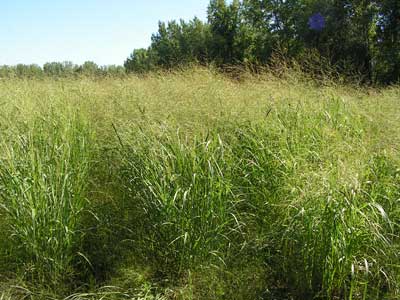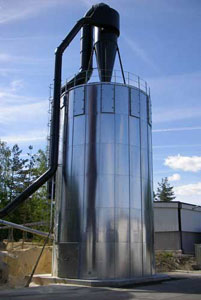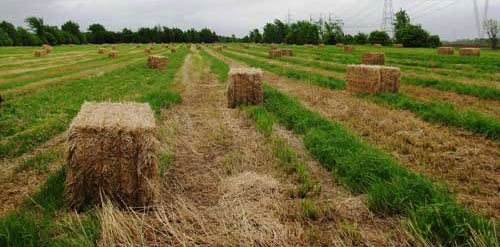From peanut oil to methane gas. The fuels powering the diesel engine have undergone considerable development during its 119 year long history.
So much so that today, even the fuel we traditionally, if somewhat simplistically, refer to as ‘diesel’ is beginning to make way for alternatives with a smaller environmental footprint, such as biogas and DME. Time to examine what it is all about.
One might say that diesel is somewhat misunderstood and has received more than its fair share of criticism from an environmental perspective. Originally the term had nothing to do with any particular type of fuel but instead only described a particular type of engine.
For instance, Rudolf Diesel, the inventor of the diesel engine, ran his first engines on peanut oil.
For many people, however, the word has become synonymous with fossil diesel oil, which is a rather narrow description since the diesel engine can be run on many different fuels, some of which are renewable.
The common factor is that they are ignited via compression instead of via the spark provided by a spark plug.The reason why diesel oil has become synonymous with the diesel engine is that, over the years, that has been the most common fuel used in the diesel engine.
However, as society’s demands increase and technology makes significant advances, so too are more and more alternative fuels being developed for use in the diesel engine.
“It’s important for us to work with a wide range of alternative fuels and to come up with solutions that reduce our impact on the climate. It is already possible to build efficient diesel engines that run on renewable fuels.
"This can be shown, not least, in our new Volvo FM MethaneDiesel and the bioDME-powered trucks on which we are now conducting field tests. This fuel has the potential for cutting carbon dioxide emissions by 95 percent,” says Lars Mårtensson, Environmental Director at Volvo Trucks.
One engine – several fuels

Anders Röj (pictured alongside) is a fuel expert at Volvo Technology.
He explains that diesel fuel can actually be made from virtually any organic material just as long as it has flammable properties that make it suitable for the diesel process.
“However, some fuels require major or minor modifications of the engine and its peripheral equipment.
And, unfortunately, the engine does not always function equally well on all fuels. For instance, biodiesel exhibits poorer stability and cold-weather properties than hydrocarbon-based diesel fuels.
When mixed in small quantities with diesel oil, however, biodiesel functions well if its quality is acceptable in other respects.
Since there is such a wide range of alternative fuels, it's good idea to review what is available.
Following is a survey of both existing and future fuels for the diesel engine.
Fossil diesel oil
What we traditionally refer to as diesel oil is a petroleum product consisting of hydrocarbons. To produce diesel fuel, crude oil is first distilled and then refined. In this process the petroleum is filtered and purified to meet the legislative requirements and diesel standard of the particular country in which the fuel is to be sold.
The EU, for instance, has both a directive and CEN standard EN 590 – an abbreviation that stands for European Committee for Standardization – to regulate quality requirements for diesel fuel.
The US on the other hand generally adopts the ASTM International standard. Furthermore, many countries also have their own national standards.
According to Anders Röj, fossil diesel fuel offers the best energy efficiency from initial oil extraction to combustion in the engine, known as the “well-to-wheel” perspective.
“Nature has done an excellent preliminary job with its crude oil deep down in the bowels of the earth over millions of years. And in the almost 100 years that oil refineries have been around, the technology has also undergone significant development,” he explains.
Biodiesel

FAME, Fatty Acid Methyl Esters, is the collective name for what we refer to as biodiesel. FAME can be produced from a number of different vegetable or animal oils, such as rapeseed oil (RME), soya oil (SME) and palm oil (PME).
It is even possible to run a diesel engine on fuel obtained from used cooking oil or tallow, depending on where in the world the biodiesel is produced.
The advantage of FAME fuels is that they give 50-60 percent lower CO2 emissions from “well to wheel” compared with conventional diesel, and are free from sulphur and aromatics. The fuels’ downsides are that they contribute to increased emissions of nitrogen oxides (NOx).
Within the EU, it is no longer permitted for diesel fuel to contain more than seven percent FAME since, with a higher proportion, NOx emissions will be too high.
“Had FAME not been a bio-component we would probably be very negative to such fuels due to the NOx emissions and quality problems. Now, however, there is political pressure to use renewable fuels, and biodiesel is one of the few biofuels currently available on a commercial scale,” says Anders Röj.
Synthetic diesel
Diesel oil can also be produced synthetically through gasification of fuels such as black coal and natural gas, creating a fuel that contains a smaller proportion of aromatic hydrocarbons.
There is at present no significant production of synthetic diesel, however, research is currently being conducted into energy-efficient gasification of biomass. If this project is successful synthetic diesel may become a particularly viable fuel in the future.
“Emissions of NOx and particulates from synthetic diesel are lower than from fossil diesel oil. However, the energy content per litre of fuel is somewhat lower,” Anders Röj goes on to say.
DME (Dimethyl ether)
One of the synthetic diesel fuels being examined is an ether known as DME, a carbon/hydrogen/oxygen molecular bond.
At present DME is produced from natural gas, but Swedish company Chemrec is running a pilot plant for the production of BioDME in Piteå, where the raw material being used is black liquor, a high-energy by-product of paper pulp manufacture.
It gives 95 percent lower carbon dioxide emissions than diesel fuel and zero emissions of soot. BioDME can also be produced from other biomass sources.
“As a diesel fuel, BioDME gives the highest energy output per unit of raw material. It offers five times the driving range per unit of cultivated arable land than biodiesel, for instance,” reveals Anders Röj.
Consequently, BioDME is one of the fuels that Volvo Trucks is focusing on for the future. The company is currently engaged in field tests in Sweden with trucks running on DME.
Methane gas
Natural gas or biogas can be used as vehicle fuel in both compressed and liquid form. It does not ignite like diesel fuel but if fossil or biodiesel is used to assist in the combustion process, it works well.
In May 2011 Volvo Trucks launched its new Volvo FM MethaneDiesel, a gas-powered truck designed for regional distribution. It is powered by up to 75 percent liquefied methane gas with the remainder consisting of diesel oil, with the diesel serving as the above-mentioned “spark plug”.
With biogas in the fuel tank, CO2 emissions drop by up to 70 percent compared with a conventional diesel engine. With fossil-based gas, emissions are cut by 10 percent.
The advantages of renewable fuels for diesel engines:
• Obtained from renewable energy sources (biomass).
• Cause lower (in some cases much lower) emissions of greenhouse gases compared with fossil diesel fuel.
• Usually produce lower particle emissions; some fuels burn with virtually no soot formation (e.g. DME).
• Other regulated emissions may also be lower than for fossil diesel fuel.








 Switchgrass for bioheat in Canada (Samson 2008)
Switchgrass for bioheat in Canada (Samson 2008)














.jpg)